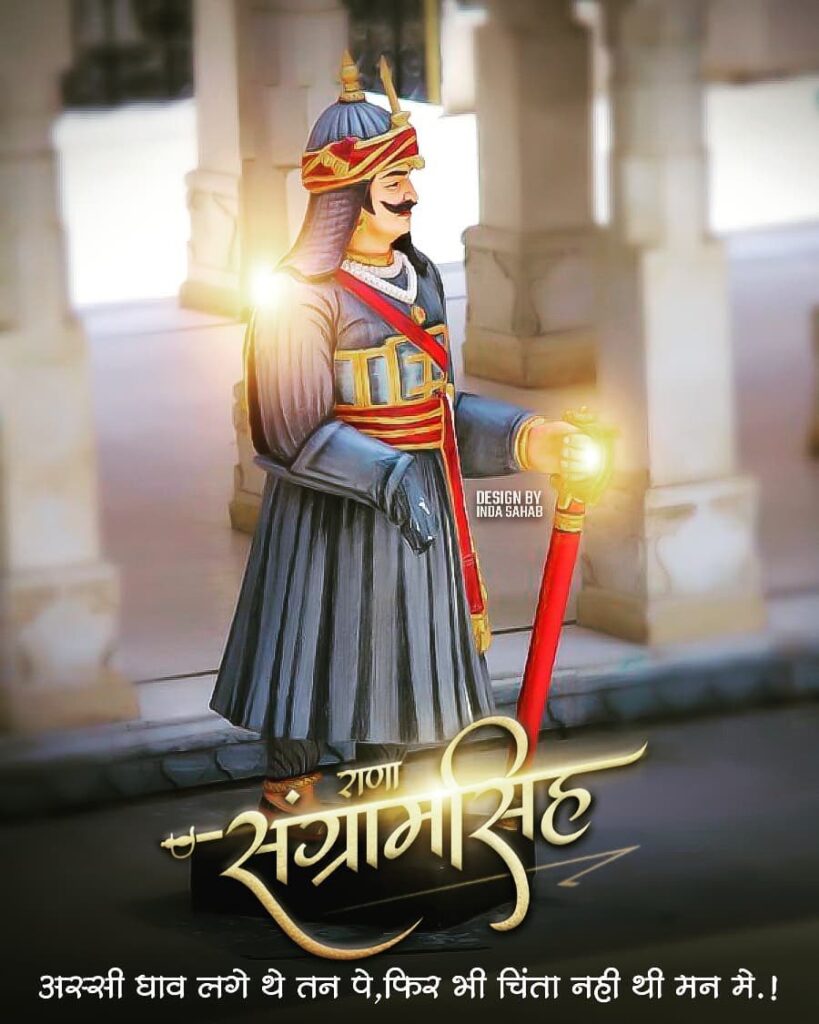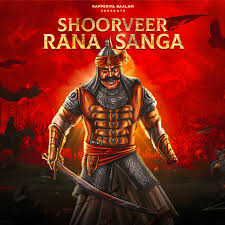Rana Sanga
Maharana Sangram Singh
Intro
Maharana Sangram Singh (12 April 1484 - 17 March 1527) commonly known as Rana Sanga, was the Rajput ruler of Mewar, which was located within the geographic boundaries of present-day India's modern state of Rajasthan. He ruled between 1509 and 1527. A scion of the Sisodia clan of Suryavanshi Rajputs, Rana Sanga succeeded his father, Rana Raimal, as king of Mewar in 1509. He fought against the Mughals in the Battle of Khanwa, which ended with Mughal victory, and died shortly thereafter on March 17, 1527.
Vijay over Lodi
Under Rana, the Rajputs scored several victories, capturing some key strategic assets in the process, including the fort of Ranthambore. In retaliation, Lodi invaded Sanga's home province of Mewar after having put down the rebellion in Delhi. Sanga counterattacked, invading enemy territory. Rajputs fought ethnic Afghans under Lodi at Khatoli (Gwalior) in 1517-18. Although Sanga lost his left arm and was crippled in one leg, he also won and captured land. Lodi, reportedly stunned by this Rajput aggression (the extent of which was unprecedented in the preceding three centuries), once again moved against Sanga’s country in 1518-19, period but was humbled at Dholpur. Lodi fought Sanga repeatedly, only to be defeated each time, losing much of his land in present-day Rajasthan, while the boundaries of Sanga's military influence came to extend within striking distance of Agra
Forgotten Battle of Banaya: First Defeat of Mughals Under Babur at the hands of Rana Sanga
After capturing Delhi, Babur decided to attack Rana Sanga as soon as possible. In 1536-1527, a two months long battle between the Turko Mongol army of Babur and Chivalrous Rajputs under Rana Sanga took place in the fields of Bayana (near Agra). The Mughals were defeated and were forced to retreat to Agra. This time Rana Sanga didn’t follow the policy of wiping out the invading enemies as he did against the Sultans of Malwa and Gujarat. He was sure that from this defeat Babur will not attack him and this gave Babur enough time to prepare for final climax at Khanwa. The undefeated Rajput king had finally made a miscalculated move and this would prove to be a heavy mistake on his part.
Babur: the mughal invader
After his initial gains Rana Sanga became recognized within north India as a principal player in the power struggle to rule the northern territories of princely India. His objectives grew in scope – he planned to conquer the much sought after prize of the Muslim rulers of the time, Delhi, and bring the whole of India under his control. He had crushed Gujarat and conquered Malwa and was now close to Agra. It was at this juncture that he heard that Babur had defeated and slain Ibrahim Lodi and was now master of the Delhi Sultanate. Rana Sanga believed that Babur had plans to leave India, indeed from all the information he was getting it seemed that Babur was getting ready to consolidate his newly gained northern holdings, Rana Sanga decided, in a miscalculation of Barbur's strength and determination, to wage a war against the Mughal invader
Then he ordered Babur to leave India. Initially he hoped to attain this by sending his vassal Sardar Silhadi of Raisen as his emissary. Silhadi who went to Babur’s camp was won over by Babur. Babur accepted that to rule North India he may have to engage in battle with Rana Sanga and hence had no desire for retreat. Babur and Silhadi hatched a plot. Silhadi, who held a large contingent of 30,000 men would join Babur’s camp at critical moment of battle and thus defeat Rana Sanga. Silhadi who went back to Chittor, told Rana that war is a must. The Rajput forces of Rana Sanga, supplemented by the contingents of Hasan Khan Mewati and the Afghan, Mehmud Lodi and Raja Medini Rai of Alwar, met Babur’s army at Khanwa near Fatehpur Sikri in 1527. The battle, which lasted for not more than 10 hours, was bitterly contested and became an exceedingly brutal affair. At a critical moment of battle, the defection of Silhadi and his contingent caused a split in the Rajput forces. Rana Sanga while trying to rebuild his front was wounded and fell unconscious from his horse. The Rajput army thought their leader was dead and fled in disorder, thus allowing the Mughals to win the day. Rana Sanga was whisked away to safety by the Rathore contingent from Marwar and once he became conscious he learnt of the defeat. But Rana Sanga, unwilling to admit defeat, set out once more to rebuild his military and renew war with Babur. He vowed not to set foot in Chittor till Babur was defeated by him. In 1528, he once more set out to fight Babur at Chanderi to help Medini Rai who was attacked by Babur. But he fell sick at Kalpi and died in his camp. It is widely believed that he was poisoned by some of his nobles who quite rightly thought his renewal of war with Babur was suicidal
Legacy
Rana Sanga not only defeated his enemies but accompalished something that was not expected by anyone- UNITING THE RAJPUT CLANS and defeating the Delhi Sultanate. Had it not been for his decision to not finish the Mughal army after defeating them at Banyana, Indian history would have been a lot different.

Rana Sanga
Maharana Sangram Singh
Jai Hind

Rana Sanga
Maharana Sangram Singh
Jai Hind